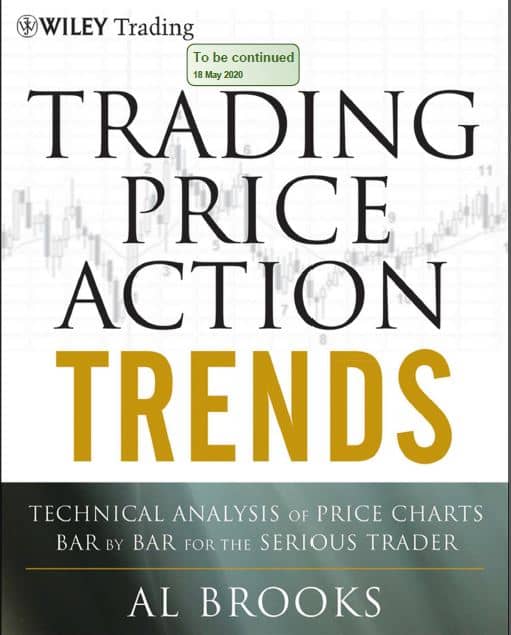‘Trading Price Action Trends’ PDF Quick download link is given at the bottom of this article. You can see the PDF demo, size of the PDF, page numbers, and direct download Free PDF of ‘Trading Price Action Trends’ using the download button.
Trading Price Action Trends PDF Free Download

Part 1: Price Action
The most useful definition of price action for a trader is also the simplest: it is any change in price on any type of chart or time frame.
The smallest unit of change is the tick, which has a different value for each market. Incidentally, a tick has two meanings.
It is the smallest unit of price change that the market can make, which is a penny for most stocks.
It is also each trade that occurs during the day, so each entry on the time and sales table is one tick, even if it is at the same price as the previous trade.
Every time the price changes, that change is an example of price action.
There is no universally accepted definition of price action, and since you always need to try to be aware of even the least important information the market has to offer, you must have a very broad definition.
You can’t rule anything out, because often what seems small at first leads to big business.
The definition alone tells you nothing about where to trade, as each bar is a potential signal for both short and long trades.
There are traders who will be looking to short the next tick because they believe the market will not go up one tick and others who will be buying because they believe the market will likely not go down one tick.
They may be looking at the same chart and one trader sees a bullish pattern and the other thinks there is a bearish pattern that is strong.
Chapter 1: The Spectrum of Price Action: From Extreme Trends to Extreme Trading Ranges
Whenever one looks at a chart, he will see areas where the market is moving diagonally and other areas where the market is moving sideways and not covering many points.
The market can display a spectrum of price action from an extreme trend where almost every tick is higher or lower than the last to an extreme trading range where every one or two-tick up move is followed by a one or two-tick down move. it occurs. and vice versa.
Rarely will the market exist in these extreme conditions, and when it does, it is only for a short period of time, but the market often trends for long periods of time with only small fluctuations and it often lasts for hours. Moves up and down in a narrow range. ,
Trends create a sense of certainty and urgency, and trading ranges confuse traders about where the market will go next.
All trends have short trading ranges, and all trading ranges have short trends.
Furthermore, most trends are part of trading ranges on higher time frame (HTF) charts, and most trading ranges are part of trends on HTF charts.
Even the stock market crashes of 1987 and 2009 were mere dips in a monthly bullish trend line.
The following chapters are largely organized along a spectrum from strongest trends to tightest trading ranges, and then tackle pullbacks, which are changes from trend to trading range, and breakouts, which are changes from trading range to trend. Are.
An important thing to remember is that the market continues to exhibit inertia and keep doing what it has always been doing.
If it is in a trend, most attempts to reverse it will fail. Most attempts to break out of a trend will fail if it is in a trading range.
Chapter 2: Trend Bars, Doji Bars and Climax
The market is either trending on the chart in front of you or it is not. When it doesn’t, it is in some sort of trading range, which is made up of trends on smaller time frames.
When two or more bars overlap significantly, they form a trading range. Trading ranges can have many shapes and many names, such as flags, pennants, and triangles, but the names are irrelevant.
All that matters is that the bulls and bears are in some balance, often with one side slightly stronger. At the level of an individual bar, it is either a trend bar or a trading range bar.
Either the bulls or bears are in control of the bars or they are largely in balance (one-time trading range).
The two most important concepts in trading are that everything has a mathematical basis and that at any given moment you are sure of the direction of the market, someone who believes the opposite is just as smart.
Never be sure of anything and always be open to the possibility that the market will do the exact opposite of what you believe.
Although the market is sometimes unbalanced and can go up or down quickly at times, most of the time it is relatively balanced, even though it may not seem that way to a beginner.
| Author | Al Brooks |
| Language | English |
| No. of Pages | 479 |
| PDF Size | 15 MB |
| Category | Stock Market |
| Source/Credits | archive.org |
Trading Price Action Trends PDF Free Download
